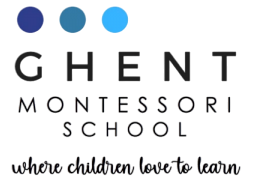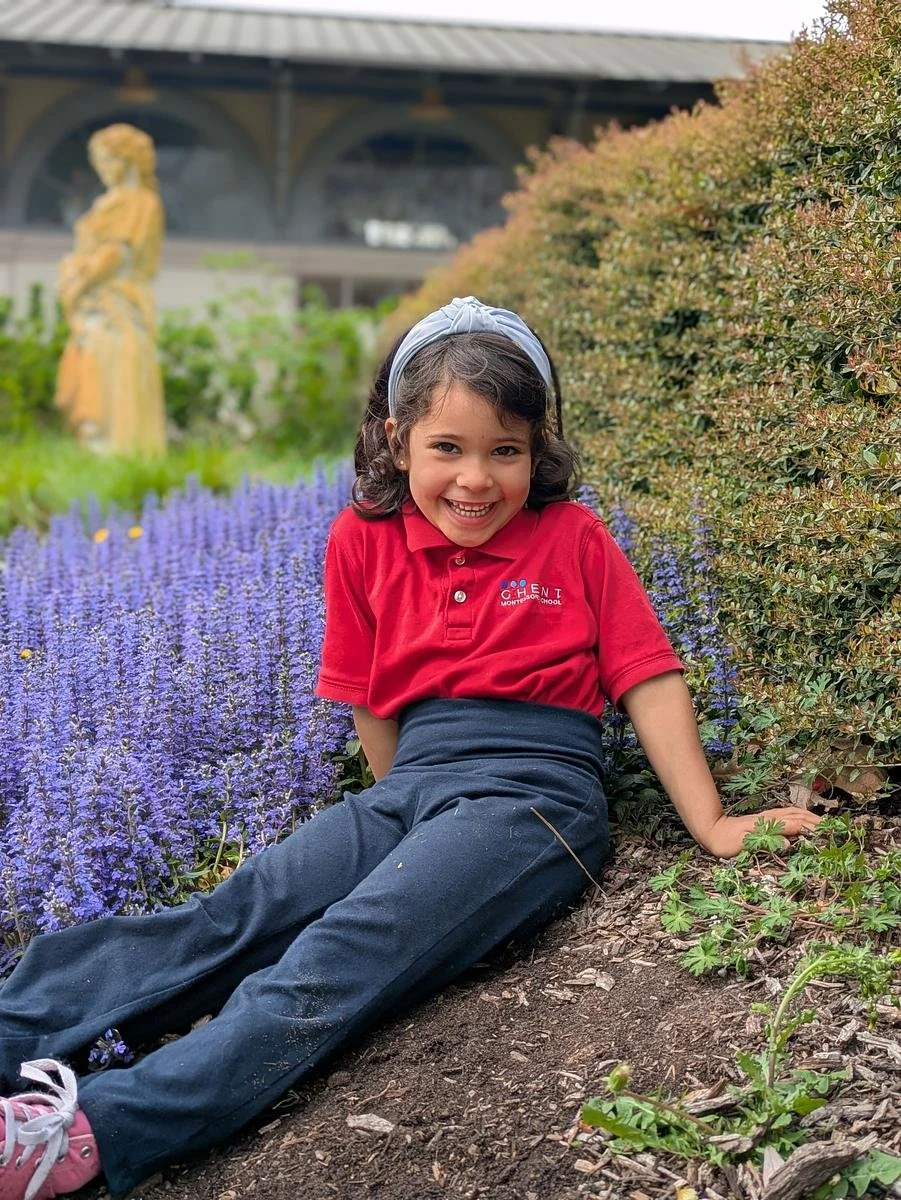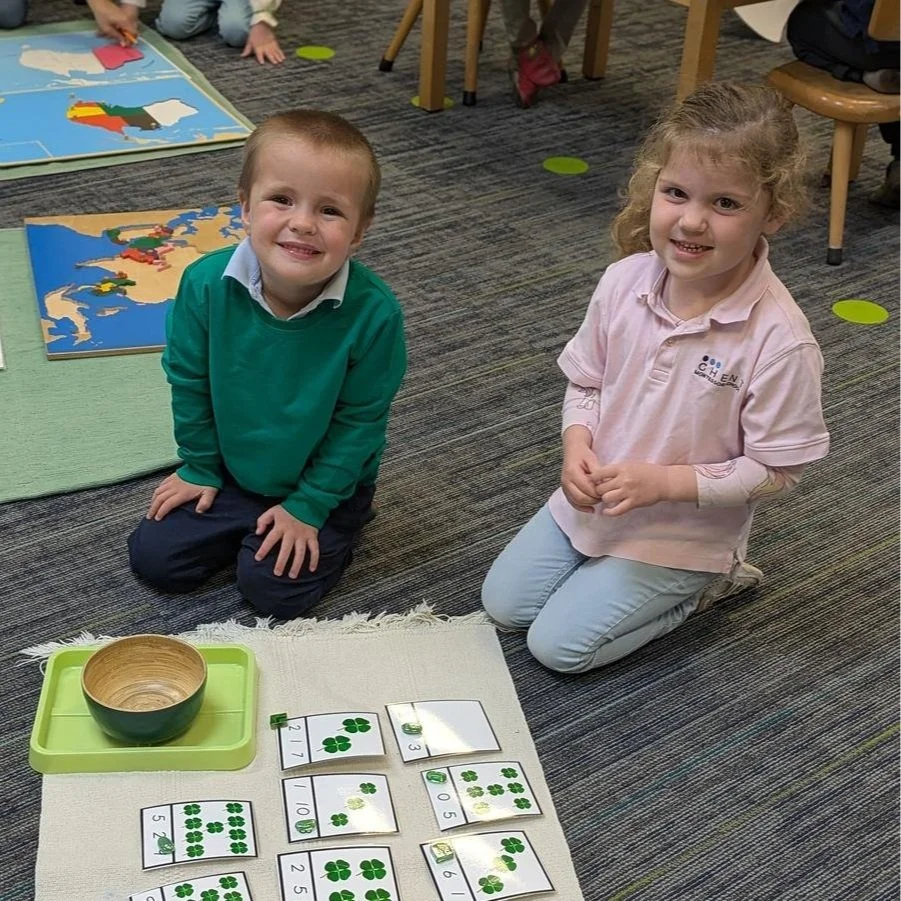Children’s House
About Children’s House
Children’s House is where a child’s natural curiosity is nurtured into a love of learning. Our trained Montessori teachers guide children through a three-year journey filled with purpose, independence, and joyful discovery.
The classroom is intentionally prepared with beautiful, hands-on materials that invite exploration and deep focus. Children move freely through the environment, choosing work that challenges and inspires them. After a lesson from a teacher, they’re free to return to the material again and again, on their own or with a partner, developing confidence, concentration, and a sense of ownership over their learning.
•••
How Learning Happens
Rather than delivering the same lesson to the whole class at the same time, our teachers create individualized learning paths. Children progress at their own pace and are introduced to new lessons and materials when they are developmentally ready.
Because there is only one of each material, children naturally develop patience, respect, and self-control while waiting their turn. This is an important life skill built into the rhythm of the day.
More than just academic growth, the Children’s House experience nurtures emotional resilience, physical coordination, decision-making, courtesy, and community awareness.
As Dr. Montessori said, children in this environment are “treading always in the paths of joy and love.”
•••
The Children’s House Curriculum
Children engage deeply across five key areas of study:
🧺 Practical Life
Children build independence and motor control through real-life tasks like dressing, preparing food, washing dishes, setting the table, and caring for plants and animals. Grace and courtesy lessons, such as saying “please,” listening respectfully, and resolving conflicts help build a peaceful classroom community.
🟥 Sensorial
Sensorial materials help children refine their senses and develop vocabulary to describe what they experience: smooth/rough, loud/quiet, heavy/light, and so on. These activities sharpen perception and lay the foundation for more abstract learning in math, geometry, and language.
🔢 Mathematics
Using tactile, concrete materials, children build a solid understanding of numerals, quantity, and place value. They work with operations like addition, subtraction, multiplication, and division in a way that makes math meaningful, not just memorized.
✍️ Language
Children begin with phonetic sounds and move toward writing and reading. Writing often comes first as children use moveable alphabets and metal insets to express ideas and build fine motor strength. Reading naturally follows as they decode and build words with confidence and joy.
🌍 Cultural Studies
Children explore geography, science, history, art, and music. They learn about the world and their place in it, building awareness of other cultures, appreciation for diversity, and respect for all living things. It’s not just information, it’s identity and connection.
•••
Our Philosophy on Technology
At GMS, we believe in hands-on learning for young children. Based on research in child development and brain science, we do not include computers or screen-based technology in our Children’s House classrooms. Real-world materials, social interactions, and physical experiences are far more effective for developing foundational skills at this age.
•••
Kindergarten: The Third Year of Leadership
The third year of Children’s House, often called the Kindergarten year, is the capstone of the Montessori early childhood experience. It’s when everything your child has been working toward begins to come together.
During this pivotal year, children are introduced to more advanced Montessori materials and begin engaging in fascinating, in-depth lessons that bring earlier concepts to life in new ways. It’s also the time when their hands-on experiences turn into lasting knowledge; what once was exploration becomes true mastery.
Kindergarteners see and feel their own growth as they help younger peers with work they have already mastered. That sense of “I used to need help with this, and now I can teach it” is powerful and it’s one of the best signs of authentic learning.
They become the leaders in the room:
Modeling kindness and responsibility
Practicing collaboration and problem-solving
Thinking critically and independently
Contributing to the community in meaningful ways
This final year in Children’s House gives children the chance to own their learning, step into leadership, and prepare with confidence for the transition into our Elementary program.
Kindergarten is not a repeat year; it’s the most important one. It completes the three-year cycle and allows your child to fully internalize the independence, concentration, and social skills they’ve been developing since age three.




